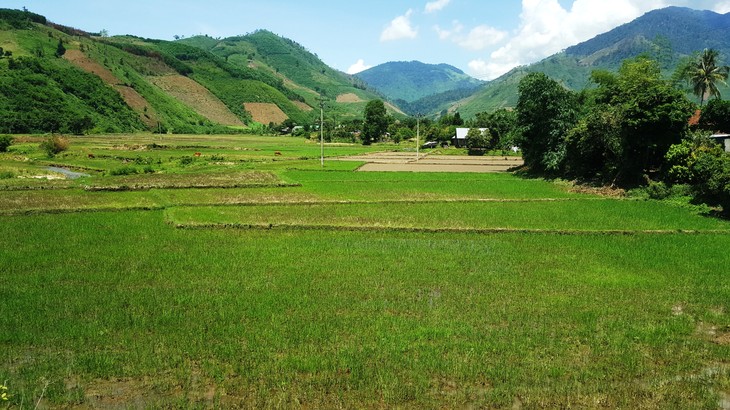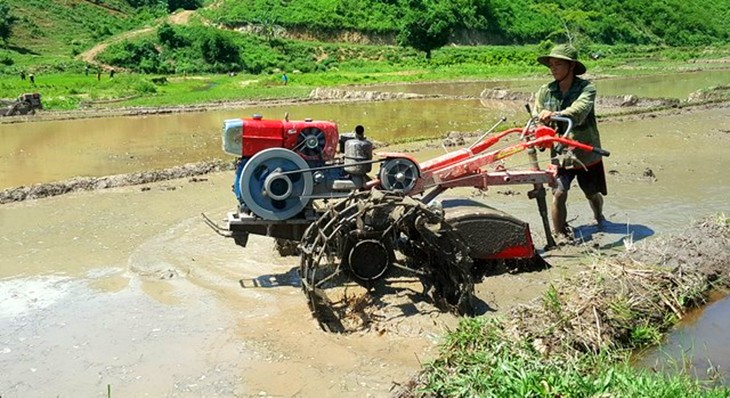(VOVWORLD) - Krong Bong district in Dak Lak province, a revolutionary base during the war, was liberated in 1965. 55 years later, Krong Bong has changed a lot and life here continues to improve day by day.
 A rice field of Tul hamlet, Yang Mao commune (Photo: VOV) A rice field of Tul hamlet, Yang Mao commune (Photo: VOV) |
The people of Tul hamlet in Yang Mao commune will begin their harvest in a few weeks. Walking on the paved road connecting Tul hamlet with nearby rice fields, patriarch Y Dhak Nie Kdam said that a decade ago Tul was one of the poorest hamlets in Yang Mao commune, with a poverty rate close to 70%.
Now everything has changed. Local people have learned how to use technology to improve their lives.
The patriarch told VOV, “The first change was in infrastructure. We now have roads, schools, a medical clinic, and electricity. Then local productivity and business improved and people started becoming more comfortable financially. The villagers came together to help each other out of poverty and were not corrupted by outside influences.”
Khue Ngoc Dien commune in Krong Bong district, which was severely damaged during the war, has gradually prospered since Vietnam began its renewal process in 1986.
Nguyen Van Truong, a commune official, says that when Khue Ngoc Dien was liberated in 1965, it had only 163 households. Then more than 1,000 families from Quang Nam and Da Nang migrated to the area under new economic zone development programs. They transformed virgin soil into fields and built irrigation works to grow rice.
|
 Locals have applied technology and mechanized their production. Locals have applied technology and mechanized their production.
(Photo: VOV)
|
In 2003 when the national grid was brought to the hamlets, local people changed their way of thinking and started mechanizing their production. Food per capita grew from 80 kg in 1986 to more than 1,000 kg per year. The average annual income went from less than 690 USD in 2015 to more than 1,000 USD per person.
Truong said these changes were the result of investment by the Party and State and persistent efforts by the local citizens.
“The commune has prospered thanks to the leadership and support of the central and provincial administrations, as well as the district’s investment in infrastructure. Local people have expressed confidence in the Party and government, whose programs aimed at economic development, ensuring national security and defense, and building new rural areas,” Truong added.
According to Do Quoc Huong, Secretary of Krong Bong’s Party Committee, the district has set a target to raise the annual economic growth rate to 11%, to raise production value per head to more than 4,000 USD, and to reduce the district’s poverty rate below 9% by 2025.
“We are focused on building infrastructure, especially roads and irrigation systems, and on forming specialized farming zones matched to local growing conditions. We have given direct support to applying technology, adopting new varieties, and replicating effective models,” said Huong, adding “Greater investment has been made in new rural development, changing people's ideas about production, poverty reduction, and helping people help themselves.”